We’ve got the aluminium Trek Fuel EX 8 on test. And we’re very pleased about this. Metal is ace.
- Brand: Trek
- Product: Fuel EX 8 (Gen 7)
- Price: £3,200
- From: Trek Bikes
- Tested by: Benji for 2 days

Pros
- Easy and fun to ride
- Excellent kit
- Short ‘n’ straight seat tube for maximum droppering
Cons
- Grips too fat for smaller hands
- Er…
- I don’t like red paintjobs
This new Fuel EX 8 is part of a whole revamp of the Fuel EX and EXe range. Essentially, the main model is the EX full 29er with 145mm rear travel and 150mm travel fork, available in carbon or aluminium. There is also a mixed wheel Fuel MX and also a longer travel 29er called the Fuel LX (which with 160/170mm travel puts something of a question mark over the future of the current Trek Slash enduro bike).
And the e-bike Fuel is not called the Fuel EXe anymore. It’s called the Fuel EX+. It still runs a TQ motor but is now the newer HPR60 (60Nm instead of previous 50Nm) paired to a 580Wh battery (previously 360Wh).
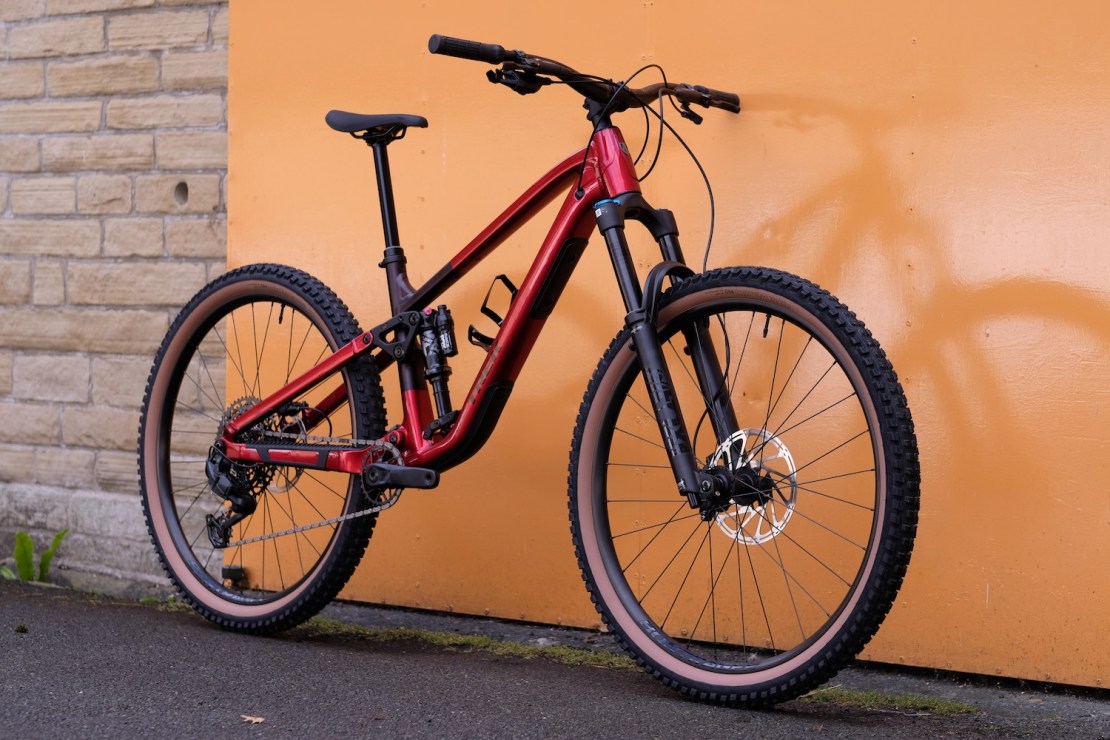
Also being offered with the higher end 9-series (AKA carbon) Fuels is Trek’s Project One customisation scheme. Each model will be offered in three colours, four drivetrain options and various other components upgrades and swap-outs.
Latest Singletrack Merch
Buying and wearing our sustainable merch is another great way to support Singletrack
Head over to the Trek website to read more about the other Fuels, this review is going to concentrate on the Trek Fuel EX 8.

Trek Fuel EX geometry
| Size | Seat tube length | Reach | Stack | Effective top tube | Chainstay length | Head angle | Effective seat angle | Actual seat angle | Head tube length | BB drop | Wheelbase |
| Small | 370mm | 430mm | 610.9mm | 549.4mm | 437mm | 64.5° | 78.6° | 72.6° | 95mm | 35mm | 1,189mm |
| Medium | 400mm | 461mm | 624.4mm | 582.7mm | 437mm | 64.5° | 78.3° | 72.6° | 110mm | 35mm | 1,225.5mm |
| Large | 420mm | 480mm | 637.9mm | 616.9mm | 442mm | 64.5° | 77.4° | 72.6° | 125mm | 35mm | 1,261.9mm |
| X-Large | 455mm | 510mm | 651.5mm | 651.2mm | 447mm | 64.5° | 76.9° | 72.6° | 140mm | 35mm | 1,298.4mm |
| XX-Large | 475mm | 530mm | 665.0mm | 680.4mm | 452mm | 64.5° | 76.4° | 72.6° | 155mm | 35mm | 1,329.9mm |

Trek Fuel EX 8 first ride review
The intention of the Fuel EX remains as it has been for quite some time. It’s a 29er trail bike. It’s available in carbon, if you like that sort of thing. We’ve got the aluminium Fuel EX 8. And I’m very pleased about this. Metal is ace.
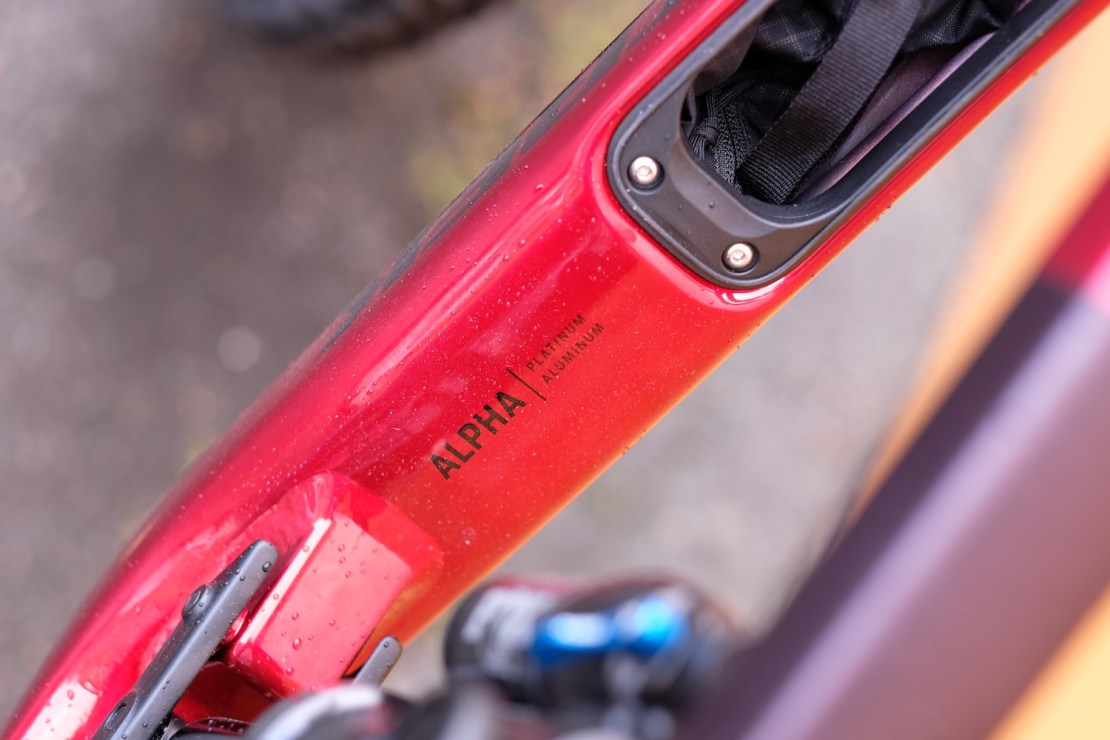

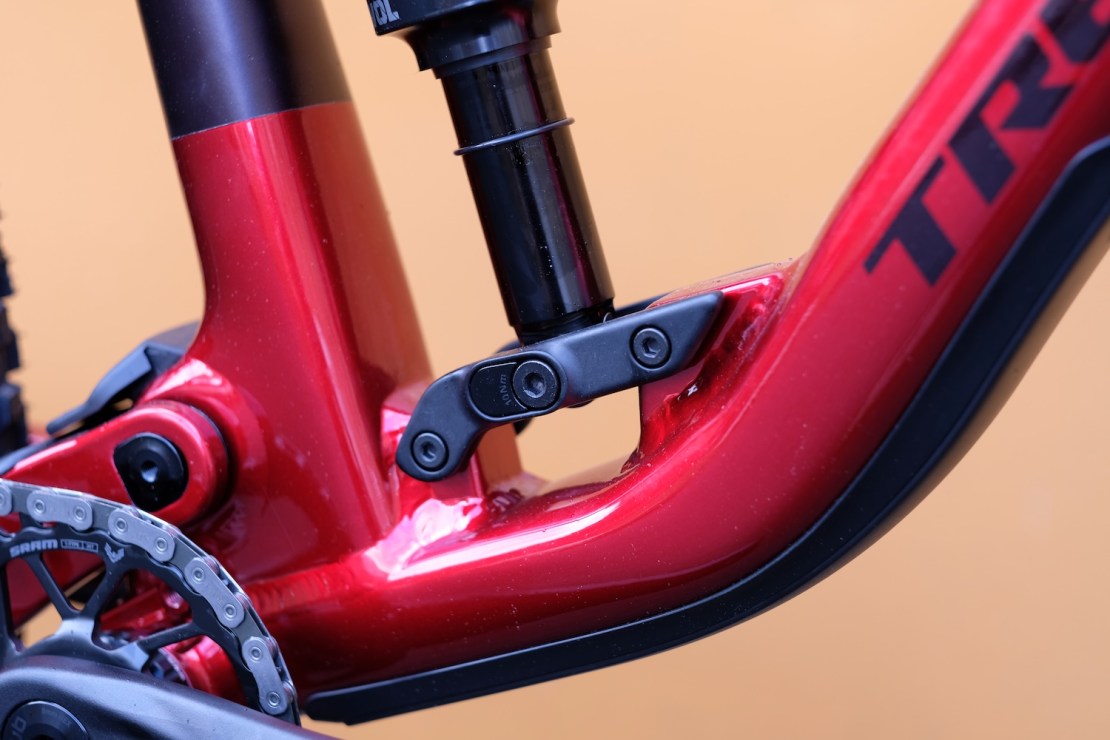

It’s possibly easier – and more revealing – to list the stuff that the new (Gen 7) Fuel EX has ditched from its previous incarnation. No more MinoLink flipchip geometry adjust. And no more kinked seat tube.
The move away from MinoLink is welcome. It never really adjusted anything significantly. For the new Fuel EX range, Trek are going down the route of whole new rocker links (three in total) and shock mount brackets (two available) for those who want to mess with such things. This is a much better way of doing things properly, as opposed to token effort flipchips. Even if the ‘real’ reason may well be cost-saving.
Regarding potential cost-savings, Trek has dropped from eight to five frame sizes. It has also re-distributed the reach figures between Medium and Large size. Again, this is a welcome move.
The move to a straight seat tube is one of the two standout frame changes for me. I really don’t like kinked seat tubes. They interfere with running decent length dropper posts as well as often putting the saddle undesirably rearward bias for taller riders (which makes bike climb worse and generalyl be less efficient under pedal power). The new straight seat tube really opens up the capability of the Fuel EX, more than any other change.
Having said that, the other standout frame change is the higher front end. More stack, longer head tube. Call it what you will. Paired with a (halle-freaking-lujah!) decently high rise handlebar (40mm), the riding stance of the new Fuel EX is genuinely excellent. I could just get on and ride the thing like a modern, sorted trail bike.

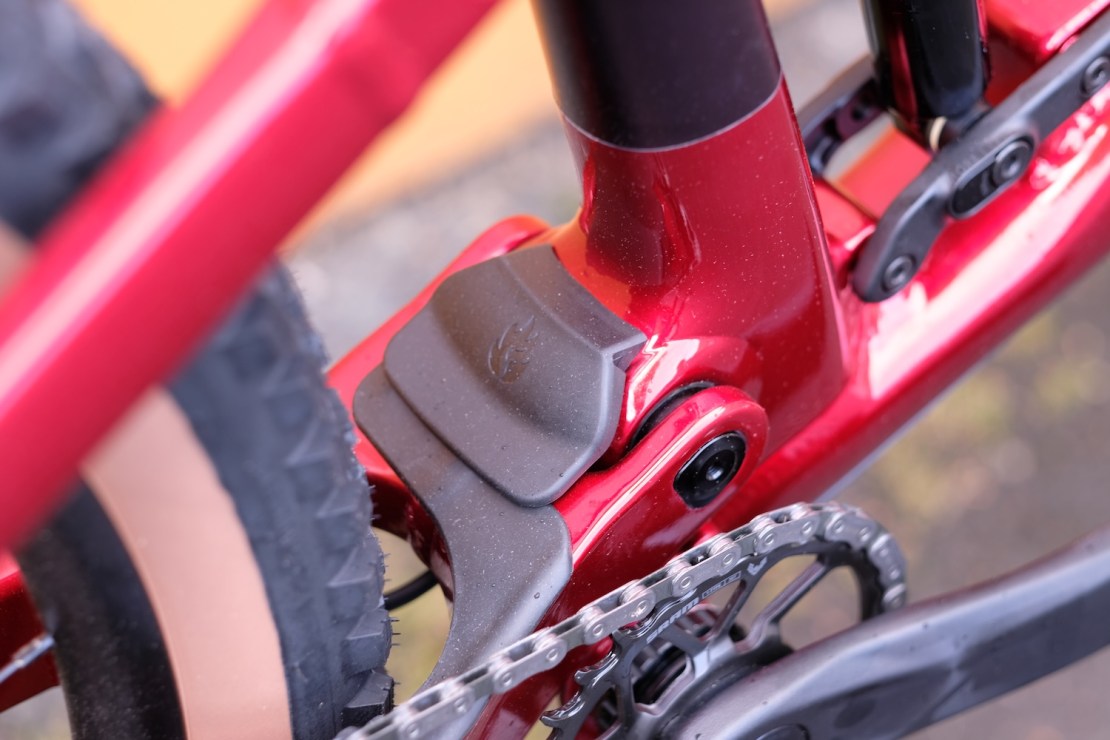
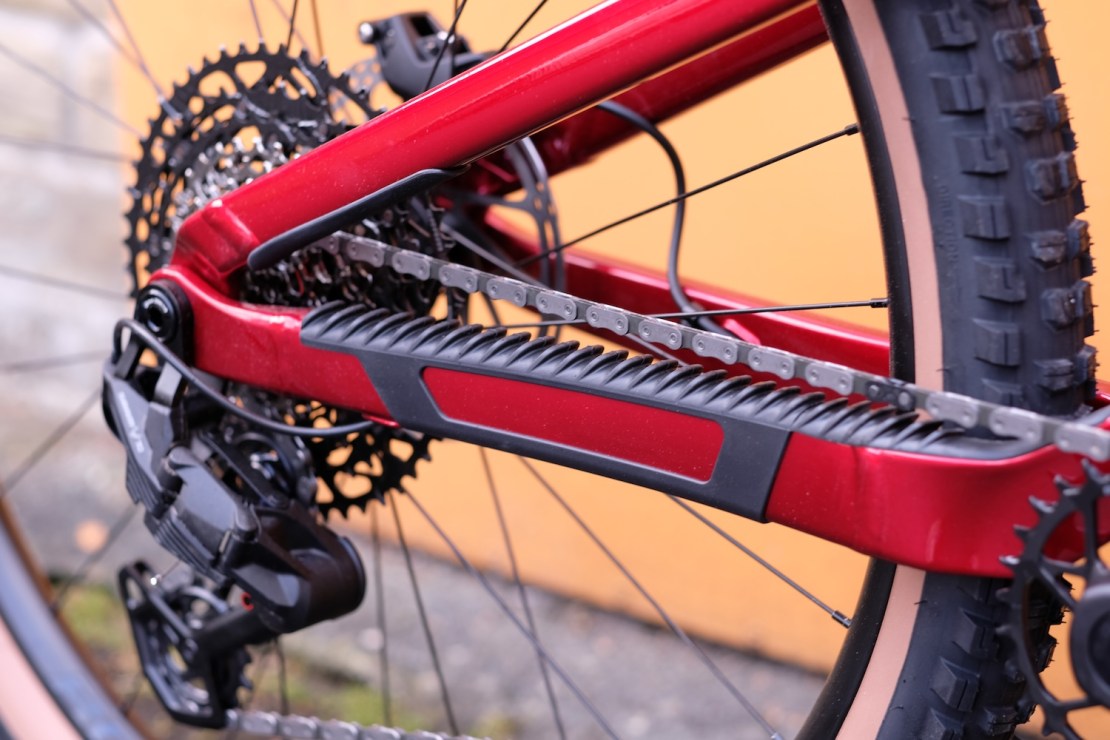
While we’re up at the front end of things, kudos to Trek for avoiding thru-headset cable routing. And the headtube uses the ZS49/ZS56 standard which means you can run angle/reach-adjust headsets should you want to fine tune things further down the line.
The down tube features a revised version of Trek’s internal frame storage. The opening is bigger. The seal is tighter. There’s two sausage bags in there. And the cables are better tucked away from interfering with inserting/removing the sausages. The storage lid is where you attach a water bottle, which can be a full-size bottle as front triangle room is more than ample.
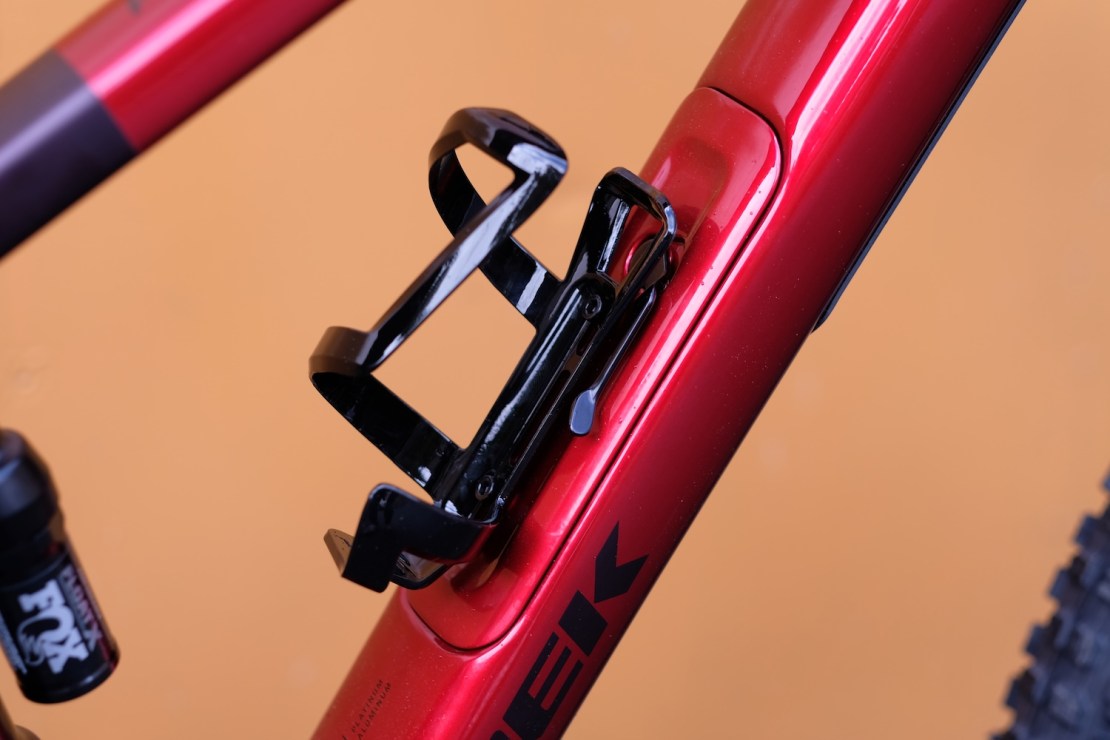

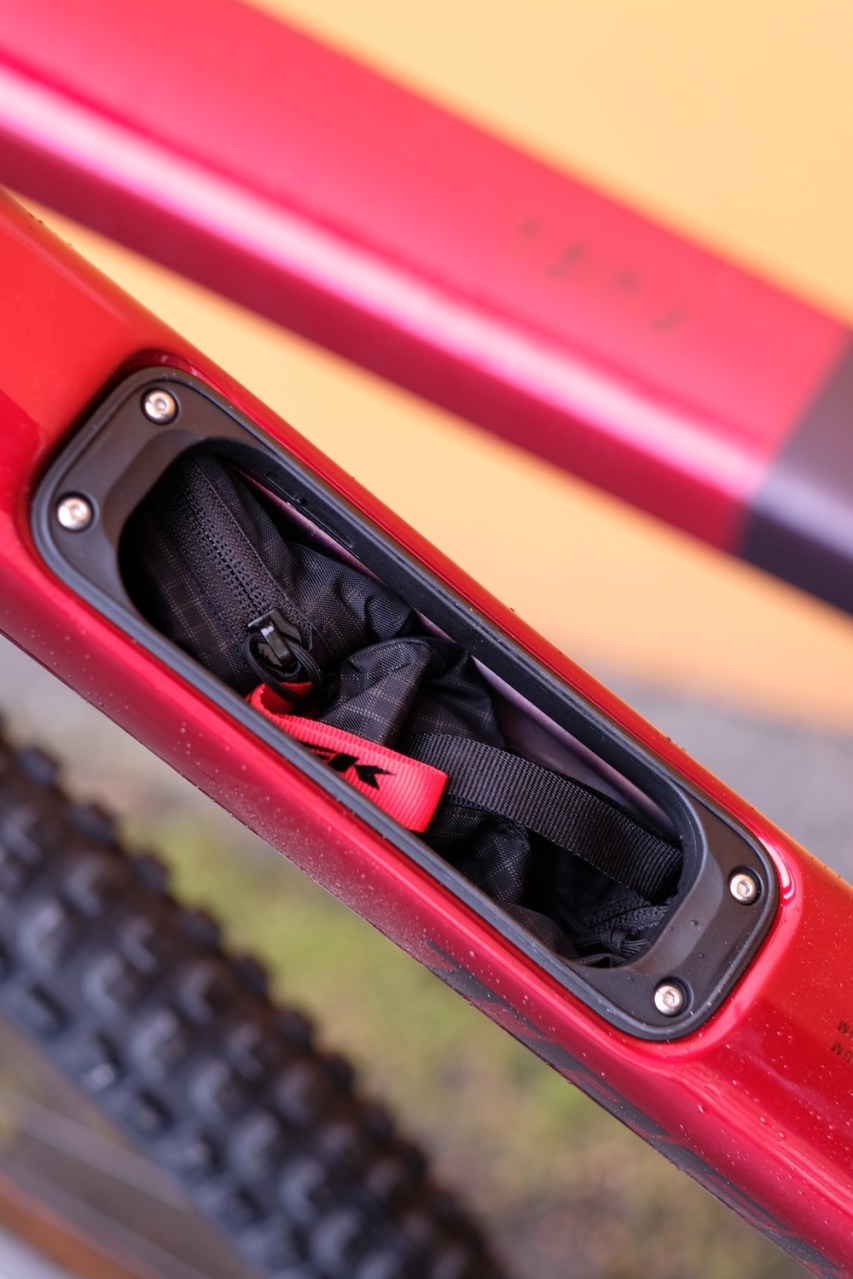


At the lower end of the down tube is where one end of the rear shock attaches. And it attaches to a bracket now, as mentioned earlier. Within the bracket is a flipchip but it’s not a geometry adjust flipchip; it’s to alter the leverage rate of the rear suspension. The stock (forward) position is less progressive, the other (rearward) position is more progressive. This can be used for switching between air and coil shocks, as well as changing the behaviour of whatever shock you run. I’ve only ridden the bike in the stock position so far.
On the underside of the down tube is a pair of frame protection rubber pads. One for pick-up truck uplifting (or whatever) and one nearer the bottom bracket end of things. Both are welcome as protection from flying rocks. Also rubbery is the new chainstay protector.
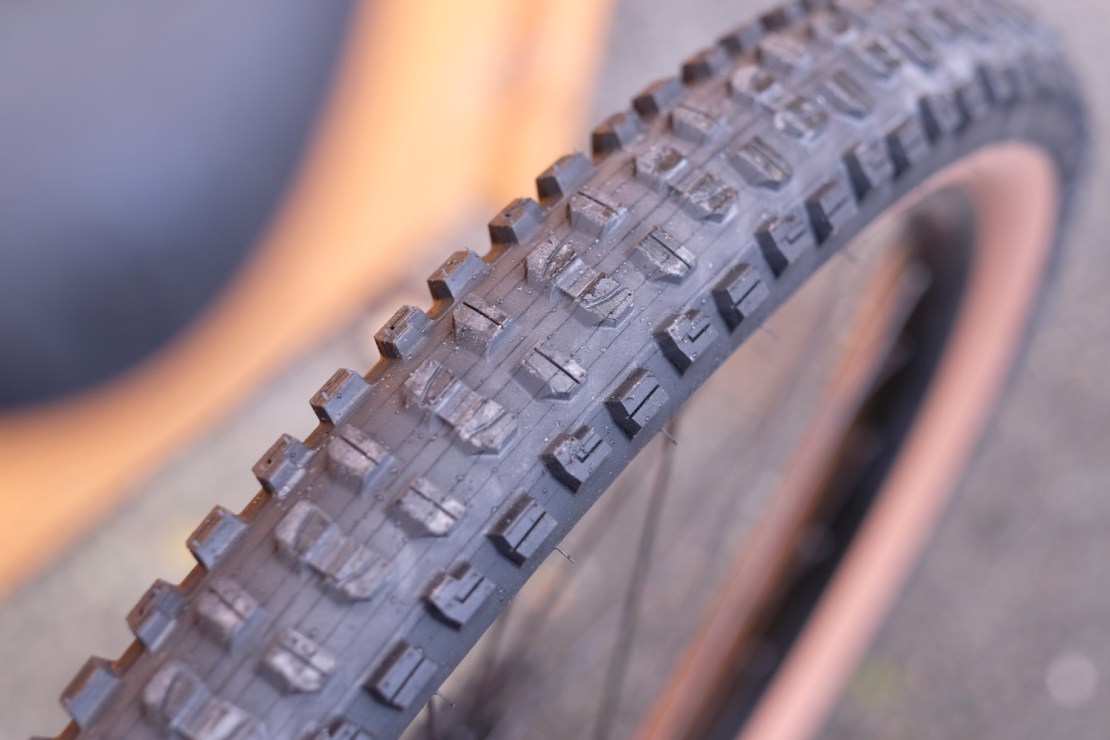



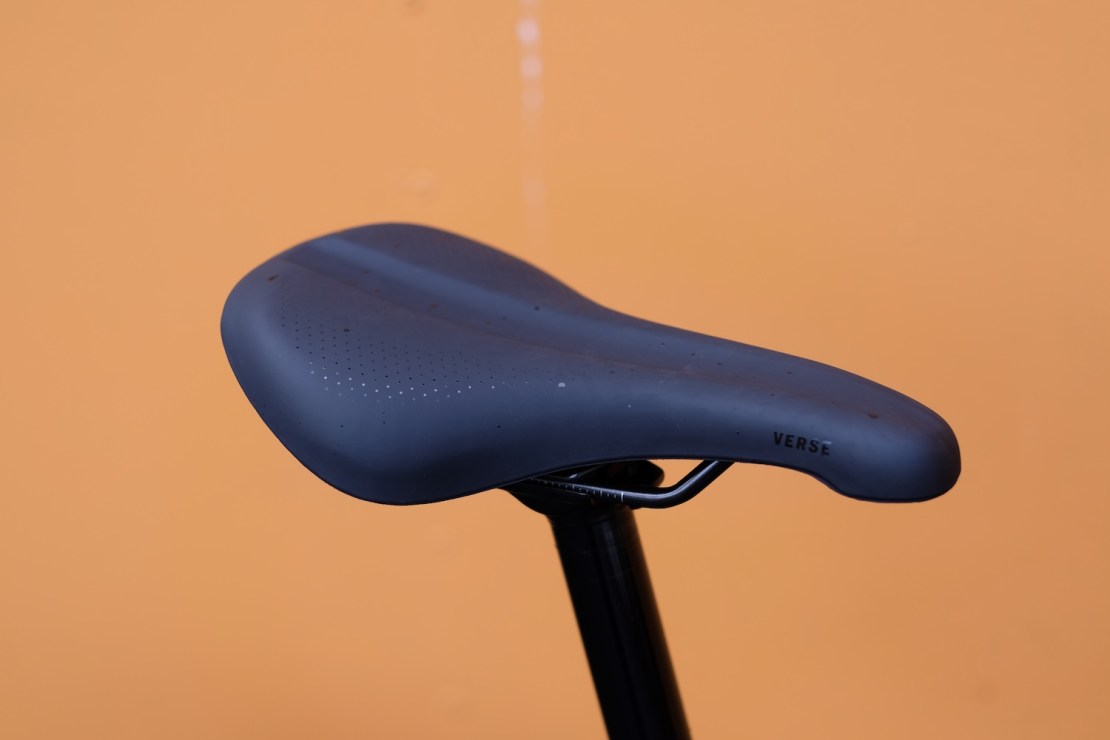

Initial ride thoughts
The Fuel EX 8 gets off to easy start for me because it has a Fox 36 Rhythm fork and Float X rear shock. Two great units that work exceptionally well and don’t have to run fully open all the time. Set the sag, add a few clicks of rebound and get on with riding.
In general the suspension feel is very well matched, both to each end of the bike and the bike in general. It’s not super firm and punchy. Nor is it a wallowy vague mess. There’s a useful, helpful, comfortable bit of ease to the initial suspension that is very nice. There’s no skittish, brittle feeling to the traction. Once off and freewheeling there’s ample support in the middle of the stroke for working the terrain and enjoying accurate, predictable handling.
Once again, metal frame mountain bikes are ace. I’ll hold off saying anything else regarding frame feel until I’ve got a lot more miles under the bike. So far, so rad.
Helping this easy vibe was the location of the contact points. The saddle is fine in neutral position (no need to hammer it forward on its rails to compensate for slack seat angles). The bars are decently wide and pleasingly high (780 x 40mm).
I would caveat this by saying that the saddle and the grips are on the chunky side. I’m totally fine with this. I found them to be really comfy. But people with smaller hands – and less sensitive bum bones – may not get along with them quite so well.
In terms of componentry, the Bontrager items (dropper, wheels, tyres etc) were all fine. The SRAM DB8 brakes are great. I love them in fact. Feel free to put bigger rotors on if you want, but as it is, the DB8 brakes have great feel and power. The cable actuated SRAM Eagle 70 Transmission… er, I haven’t thought about it once. Which is a good sign. Nice that Trek specs a 30T chainring though.
The geometry in general is well rounded. It was certainly an enjoyably ‘pick-and-place’ sort of bike – as opposed to a hurtling brawler – which preferred to be lofted over trail trouble instead of ploughed through, and that’s perfectly fine and valid. There are other longer/lower/slacker bigger travel bikes out there for that.
I’m borderline for a size Large (I’d buy the X-Large and swap in a dinkier stem personally) but I didn’t find I had to be overly careful or hold back on anything/anywhere that a modern trail bike should be able to do. I’m looking forward to many, many rides on the Trek Fuel EX 8. A metal mountain bike that doesn’t have a motor, thru-headset cabling nor an offensive price tag. What’s not to like?

UK pricing
- Fuel EX 5, £2,200
- Fuel EX 8, £3,200
- Fuel EX 9 EA90, £4,925
- Fuel EX 9 X0 AXS, £5,825
- Fuel EX 9 XT, £4,925
- Fuel EX 9 XT DI2, £5,375
- Fuel EX 9.8 EA90, £5,825
- Fuel EX 9.8 XT, £5,825
- Fuel EX 9.8 XT DI2, £6,275
- Fuel EX 9.9 X0 AXS, £7,625
Trek Fuel EX 8 specification
- Frame // Alpha NEXT Platinum Aluminum, 145mm
- Shock // Fox Float X Performance, 205x60mm
- Fork // Fox 36 Rhythm GRIP, 150mm
- Wheels // Bontrager Line Comp 30
- Front Tyre // Bontrager Brevard Pro XR 29×2.5in
- Rear Tyre // Bontrager Brevard Pro XR 29×2.5in
- Chainset // SRAM Eagle 70, 170mm, 30T
- Brakes // SRAM DB8 4-pot, 180/180mm
- Drivetrain // SRAM Eagle 70
- Stem // Bontrager Elite 35, 45mm
- Handlebars // RaceFace Turbine 35, 780x40mm
- Grips // Bontrager Lock-on
- Seat Post // Bontrager Line dropper, 34.9mm, 200mm
- Saddle // Bontrager Verse P3
- Sizes Available // S, M, L, XL, XXL
- Size Tested // L
- Weight // TBC
Geometry of our size Large
- Head angle // 64.5°
- Effective seat angle // 77.4°
- Seat tube length // 420mm
- Head tube length // 125mm
- Chainstay // 442mm
- Wheelbase // 1,269.1mm
- Effective top tube // 616.9mm
- BB height // 35mm BB drop
- Reach // 480mm
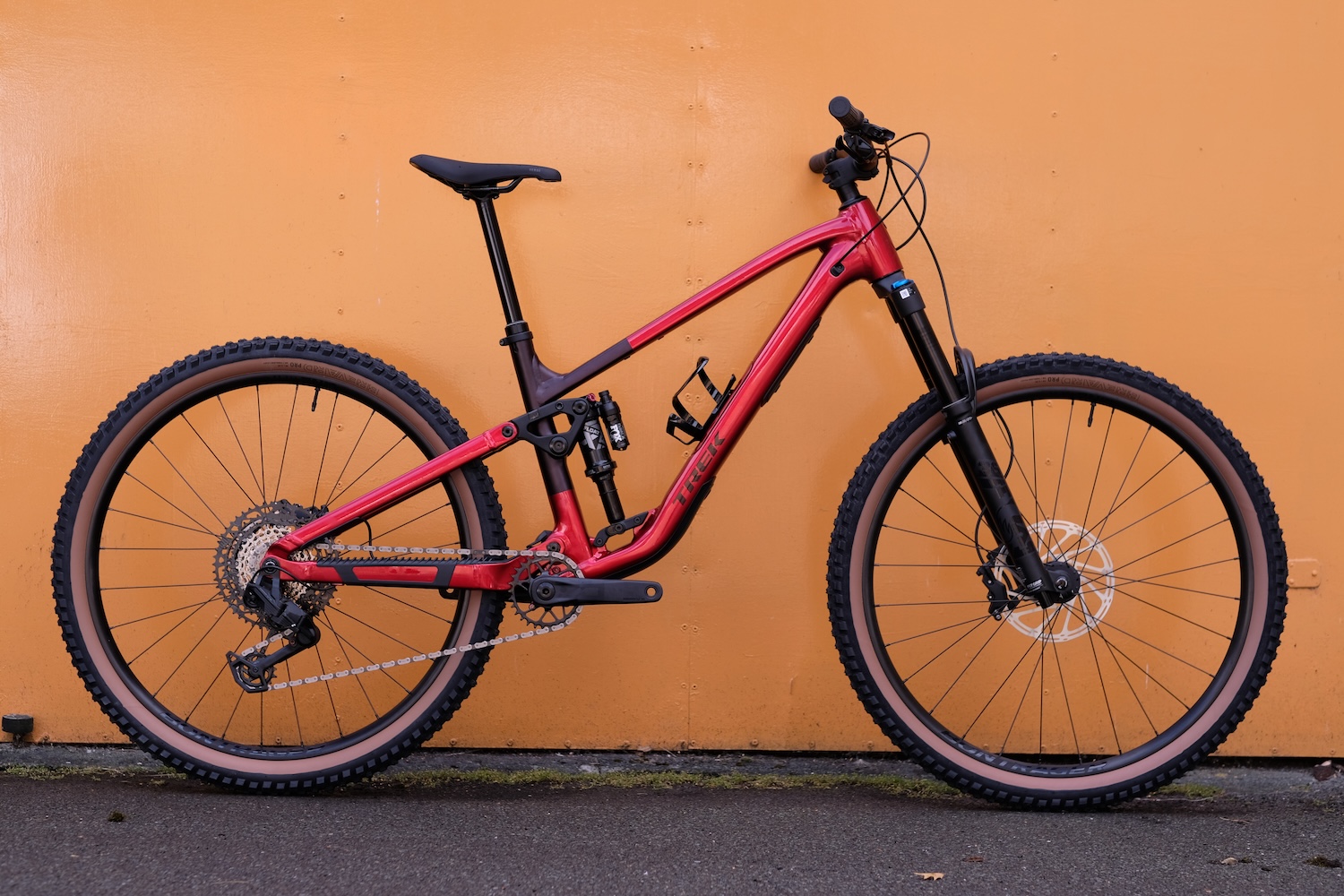
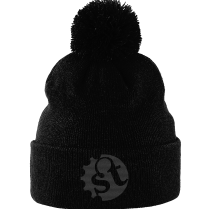
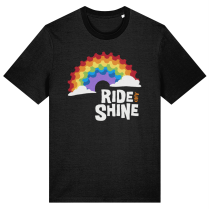
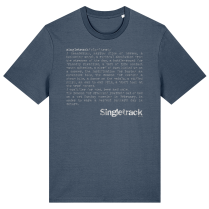
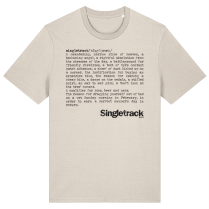

What happened to that geo chart?!
@mtbfix – Oops. Soz. Table display amended now. And a screenshot of the geo chart added too. Because why not? 🙂
Looks like my Roscoe 9 but with a rear shock. I want it!
https://imgur.com/a/bqHccWA
I wonder if the Slash will be replaced with something more modular that combines it with the Session like new Orbea and Lapierre big bikes. Maybe a Session with swappable link or rear end? Or they might just drop if in favour of the Fuel LX.